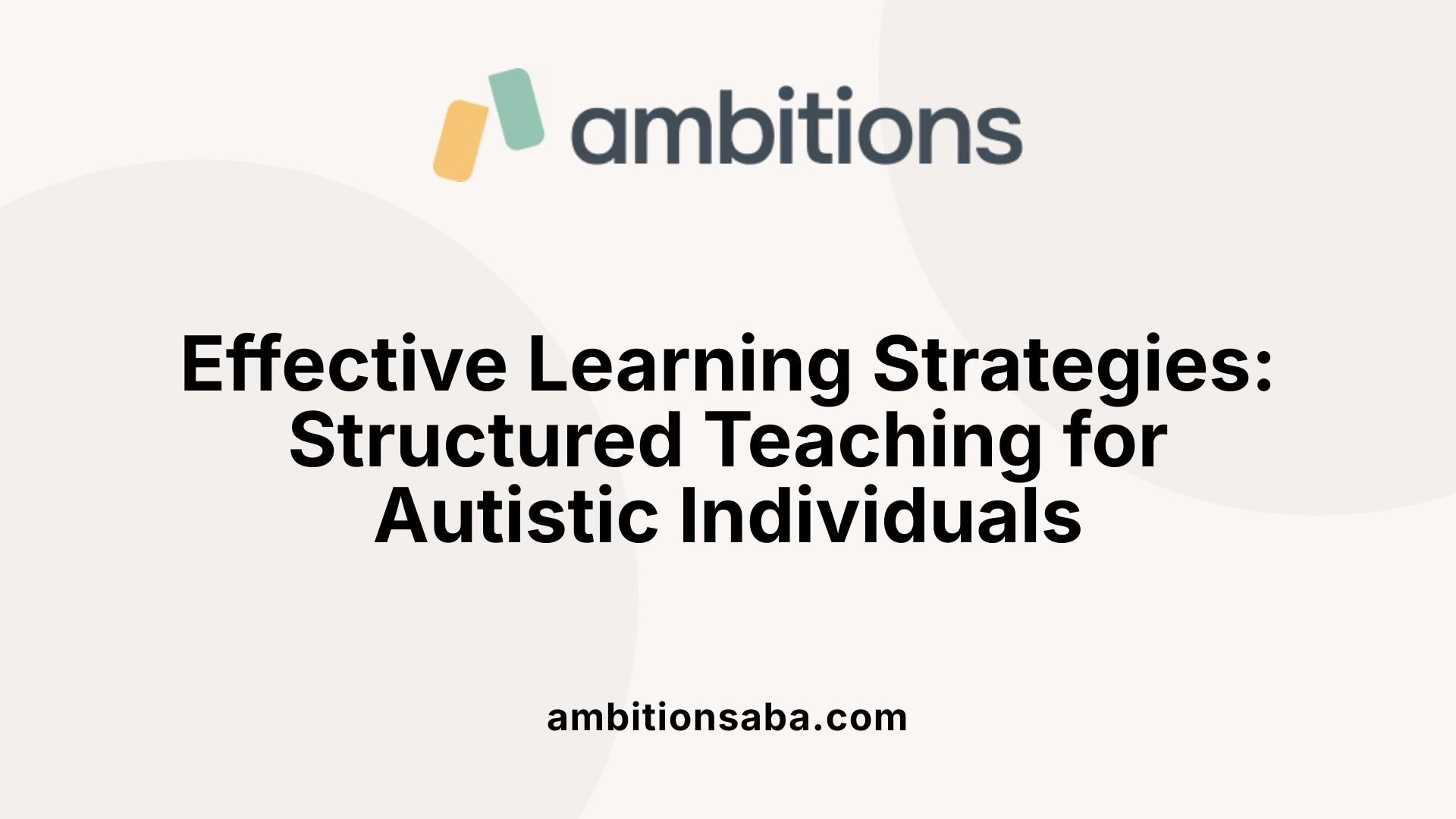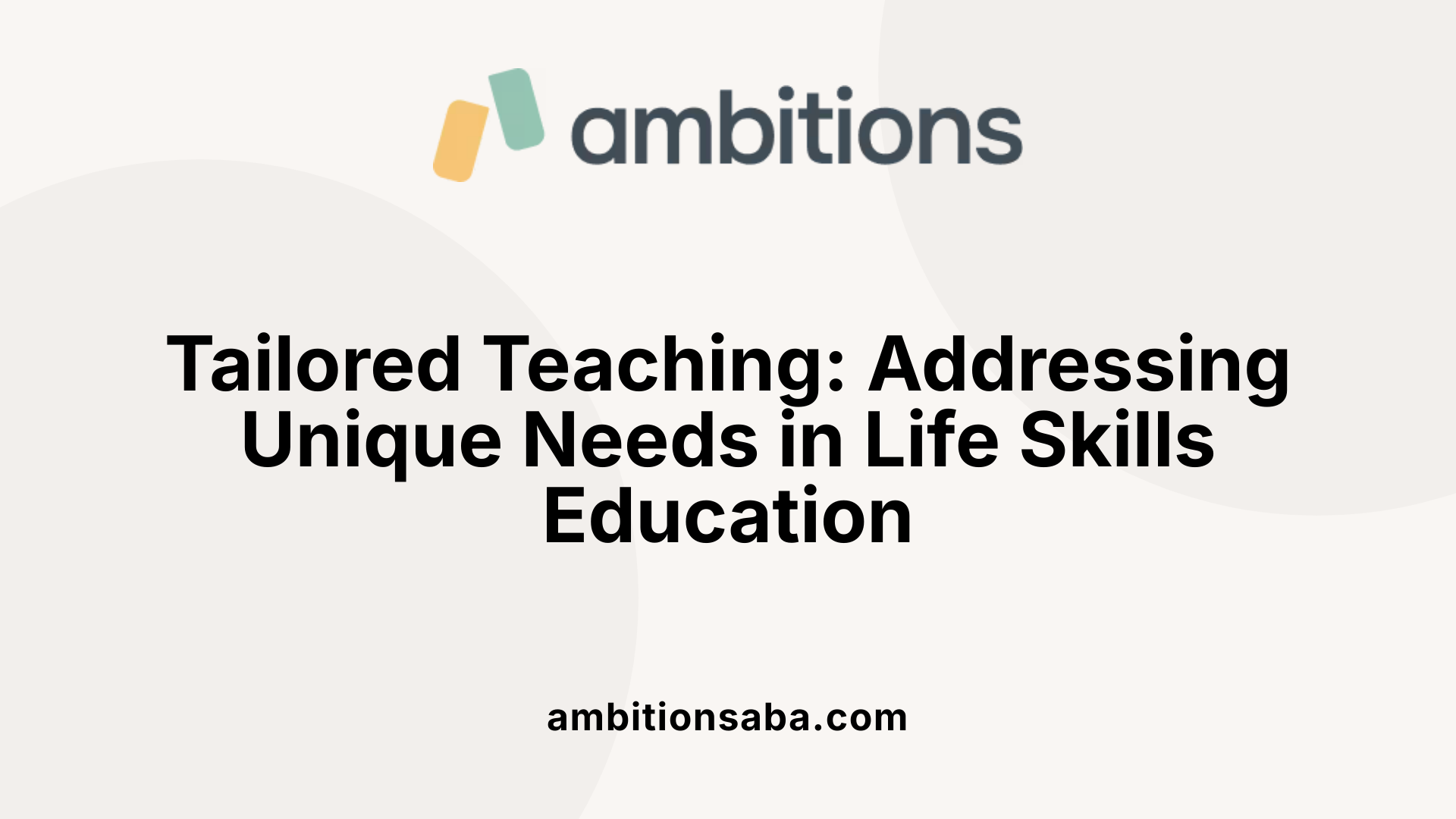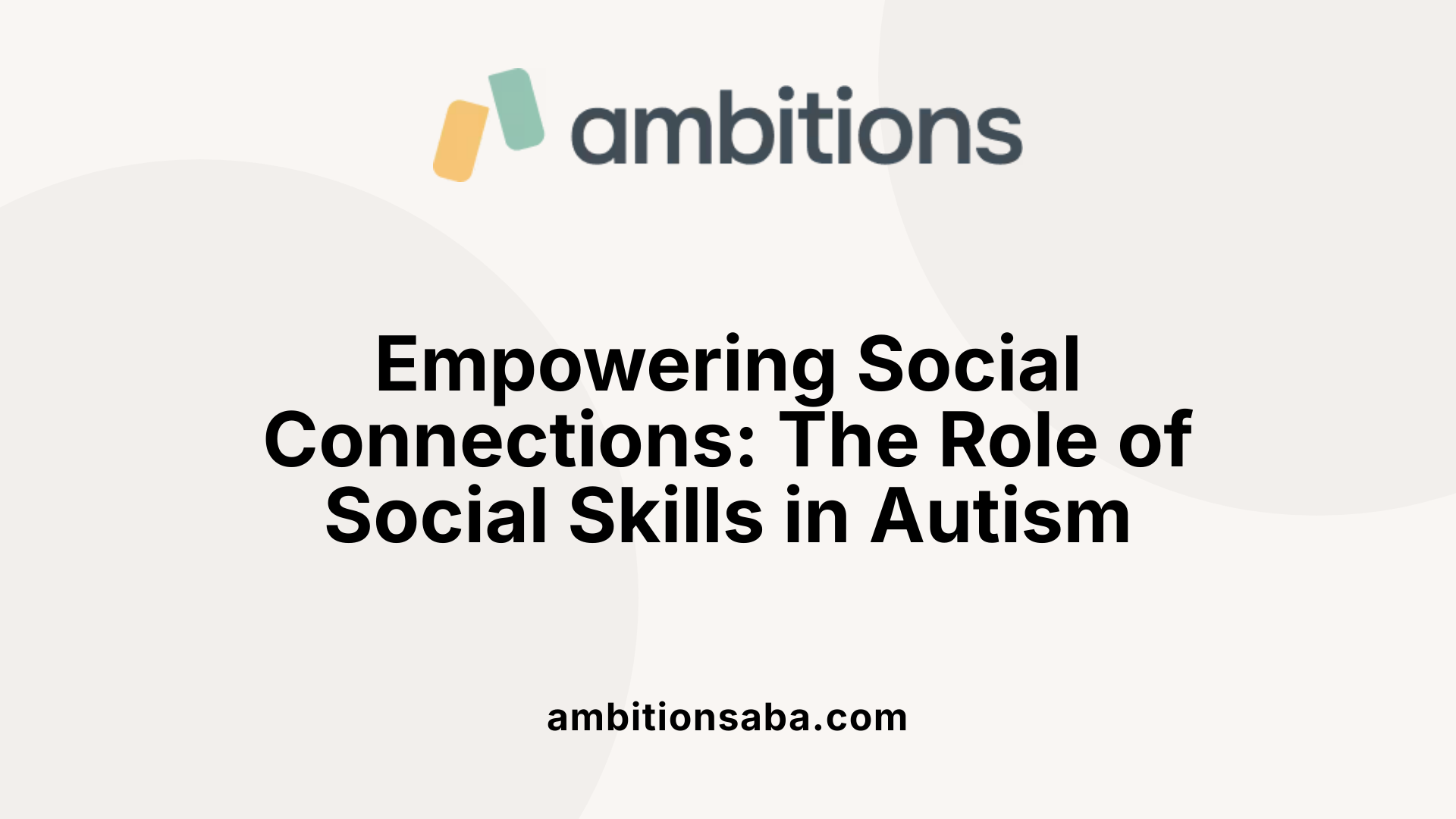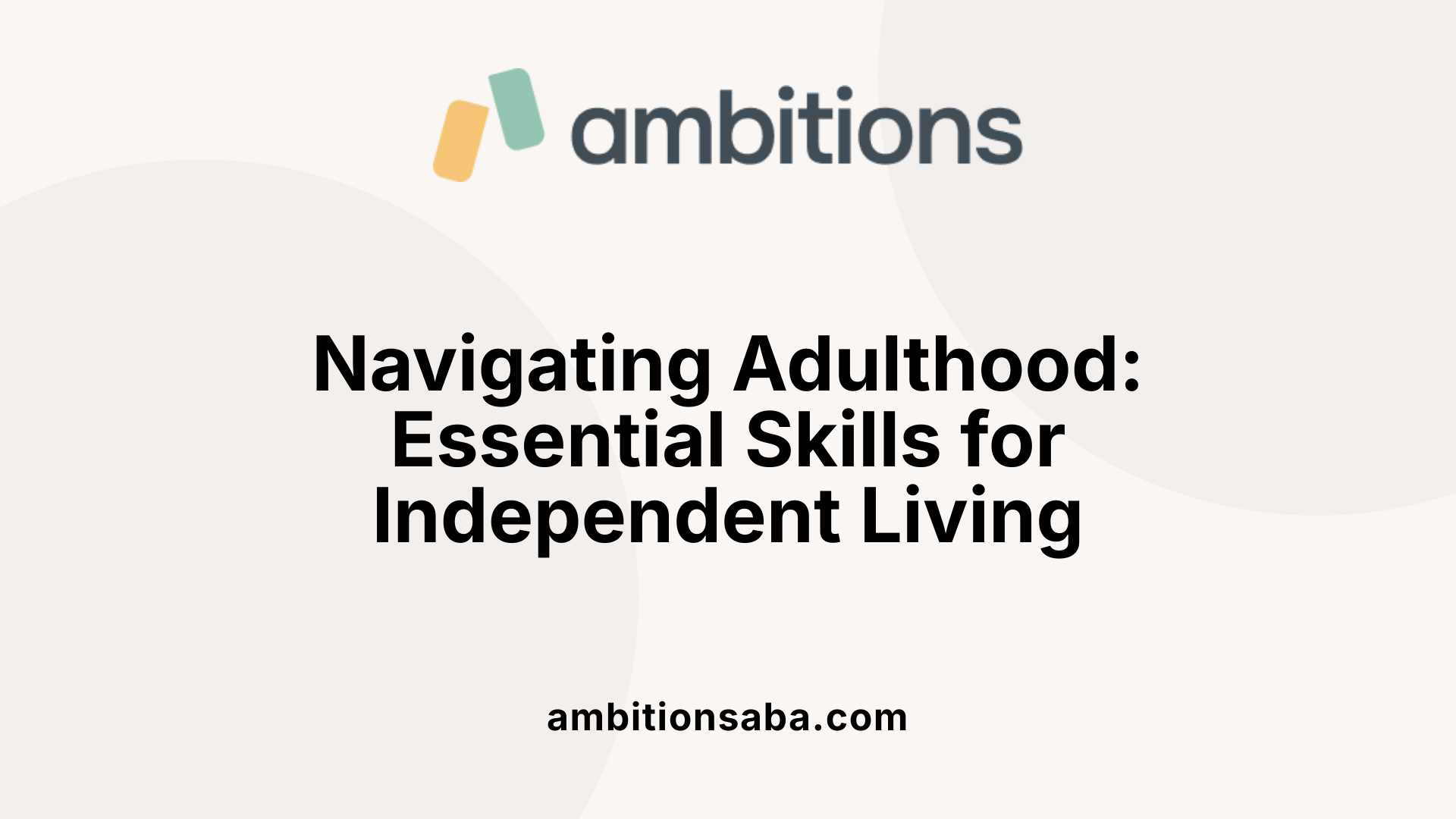Unlocking Social Understanding Through ABA Therapy
Introduction
Teaching life skills to autistic teenagers is a crucial step toward empowering them for independent and fulfilling lives. This article explores effective strategies and essential skills that can aid in their successful transition to adulthood.
The Importance of Life Skills Training
How can life skills training benefit autistic teens, and what challenges may they face?
Life skills training plays a pivotal role in enhancing the lives of autistic teens by significantly promoting independence and self-esteem. Autistic individuals acquire essential skills such as personal care, social interaction, communication, and job readiness through tailored life skills training. This comprehensive approach not only equips them with the tools they need to navigate daily living tasks but also fosters community participation, allowing them to engage more fully in their surroundings.
However, autistic teens may encounter specific challenges during their training. These can stem from cognitive, physical, and behavioral differences that lead to varied learning paces compared to their neurotypical peers. For instance, the complexity of executive functioning tasks like time management and organization might require more explicit instruction and practice for autistic individuals. This underscores the importance of adopting a personalized, structured training regimen that incorporates repetition and individual strategies designed to meet each teen's unique needs.
To navigate these challenges effectively, life skills programs must include a range of teaching methods, such as visual supports and community-based assessments. This comprehensive training ultimately helps autistic teens develop not only functional skills for daily life but also enhances their self-esteem and prepares them for meaningful participation within their communities.
Structured Teaching Approaches

Breaking Tasks into Steps
Teaching new skills effectively to an autistic person often involves breaking down the task into smaller, manageable steps. For instance, handwashing can be taught by starting with the initial actions such as pumping soap and turning on the water. From there, you can gradually introduce scrubbing techniques and other components, ensuring mastery at each stage before proceeding. This step-by-step approach not only aids in comprehension but also prevents overwhelm, which is crucial for individuals who may struggle with complex tasks.
Visual Aids
Incorporating visual aids plays a significant role in enhancing understanding. Tools such as checklists, picture schedules, and social stories clarify expectations and illustrate the steps involved in each task. For example, a visual checklist for cooking meals can help an autistic learner navigate each step from gathering ingredients to washing up afterward—reinforcing both learning and independence in daily activities.
Positive Reinforcement
Lastly, positive reinforcement is vital in the teaching process. When an autistic individual successfully completes a task or even part of a task, providing immediate and rewarding feedback reinforces their efforts. This can range from verbal praise to small incentives that encourage continued practice and mastery. Such affirmative strategies help to build confidence and motivation, making the learning experience more enjoyable and effective.
| Teaching Method | Description | Benefits |
|---|---|---|
| Breaking Tasks | Dividing tasks into smaller, manageable steps | Prevents overwhelm, enhances understanding |
| Visual Aids | Use of checklists and social stories to guide tasks | Clarifies expectations and supports learning |
| Positive Reinforcement | Providing rewards and praise for accomplishments | Boosts confidence and motivation |
Adapting Life Skills Education for Autistic Students

How do you teach life skills to students with autism?
Teaching life skills to students with autism is essential for promoting their independence at home, school, and in the community. Start by using visual aids, such as checklists for daily routines, which help students follow structured steps.
Utilizing task analysis—breaking down tasks into manageable parts—is crucial. For instance, teaching cooking can involve listing each step from gathering ingredients to cleaning up afterward. This method reinforces comprehension and execution.
Individualized Instruction
Tailoring instruction is vital; you should consider each student's unique strengths, needs, and interests. For instance, some students may excel in visual learning, making video modeling a valuable tool, while others may require hands-on demonstrations to grasp new skills effectively.
Environmental Context
Teaching in natural environments can reinforce the effectiveness of the skills taught. Cooking should happen in the kitchen, and shopping lessons in stores. This approach helps students relate the skills to their practical applications, paving the path to autonomy.
Vocational Skills
Incorporating vocational skills into the curriculum prepares students for the future. Community-based assessments can gauge skill levels, enhancing personalized programs. Through structured activities and real-life experiences, students are better equipped to enter the workforce, fostering independence and confidence.
Daily Living Skills: Foundation for Independence

What are activities of daily living (ADLs) for autism?
Activities of daily living (ADLs) for autistic individuals include essential tasks such as:
- Eating: Learning to prepare simple meals and eat independently.
- Dressing: Choosing appropriate clothing and dressing with minimal assistance.
- Washing: Mastering personal hygiene routines like bathing and brushing teeth.
- Sleeping: Establishing consistent sleep routines.
Mastery of these activities is crucial for fostering independence, yet many autistic children and young people may need tailored support to develop these skills effectively.
Addressing Challenges
Several factors can impede the ability of autistic individuals to perform these daily tasks independently:
- Sensory Processing Differences: Sensitivity to textures, sounds, or smells may overwhelm them during everyday activities.
- Social Understanding Challenges: Difficulty comprehending social norms might affect participation in community settings.
- Motor Difficulties: Challenges with fine or gross motor skills can hinder their ability to perform tasks like buttoning shirts or cutting food.
Families and educators should maintain open communication about any specific challenges related to sensory perception or sleep problems. This collaboration enhances support strategies tailored to each individual’s needs.
Support Strategies
To promote independence in daily living skills, effective strategies include:
- Visual Supports: Use checklists and picture schedules to guide daily routines.
- Task Analysis: Break down tasks into smaller, manageable steps to aid understanding and execution.
- Positive Reinforcement: Encourage skill acquisition by rewarding small successes, thus building confidence.
Overall, understanding the unique needs of each learner ensures that autistic individuals receive the appropriate assistance to thrive in their daily lives.
Utilizing Tools and Methods for Teaching Life Skills
Task Analysis
Task analysis involves breaking down complex skills into smaller, manageable steps. For example, teaching how to wash hands can be structured into eight distinct actions, such as wetting hands and drying them. This method helps individuals master each component before moving on, fostering confidence and ensuring a thorough understanding of the entire task.
Visual Supports
Visual supports, such as checklists and pictorial schedules, serve as effective tools for teaching life skills. They help autistic teens visualize daily tasks and routines, reducing anxiety around expectations. For instance, a morning routine checklist can guide them through essential morning self-care steps, making it easier to follow along.
Video Modeling
Video modeling is a powerful technique where individuals learn by watching videos that demonstrate desired skills. This method is particularly beneficial for visual learners, as it allows them to see the correct execution of everyday tasks, from cooking to grocery shopping. It engages them and provides a clear model to emulate in real-life situations.
| Method | Description | Benefits |
|---|---|---|
| Task Analysis | Breaking skills into smaller steps | Enhances skill mastery |
| Visual Supports | Checklists and pictorial guides | Clarifies expectations, reduces anxiety |
| Video Modeling | Learning through instructional videos | Engages visual learners, provides clear examples |
Importance of Social Skills and Communication

Social Interaction
Social skills play a vital role in fostering connections among individuals with autism. These skills enable communication, cooperation, and relationship-building, which are essential for participating in community activities and forming friendships.
Empathy
Empathy is crucial for understanding the feelings and perspectives of others. Engaging autistic teens in activities like storytelling or using emotion cards can promote empathy, providing scenarios where they can practice recognizing and responding to emotional cues.
Self-Advocacy
Teaching self-advocacy equips teens with the ability to express their needs and preferences effectively. Developing this skill enhances their independence and boosts self-esteem, enabling them to navigate various situations confidently.
Incorporating structured activities and visual supports in training can significantly enhance their ability to engage socially, make connections, and advocate for themselves.
Transitioning to Independence Through Practical Skills

Vocational Skills
Developing vocational skills is essential for autistic teens as they prepare for adulthood. Activities like volunteering or job shadowing can help them discover their strengths and interests while teaching them appropriate work habits. Engaging in structured activities builds confidence and practical experience, making the transition to employment smoother.
Safety Awareness
Safety awareness is non-negotiable for all teens, particularly those on the autism spectrum. Explicit instruction on recognizing dangerous situations and understanding emergency protocols is crucial. Parents and educators should discuss potential risks and ensure that teens can identify whom to trust or when to seek help, empowering them to navigate their environment safely.
Community Functioning
Understanding community resources and social norms enhances the ability of autistic teens to function effectively in society. This includes learning how to interact within various settings, utilize public transportation, and engage in community activities. These skills establish a foundation for independent living, promoting participation and integration into the community.
| Skills Area | Activities for Development | Importance |
|---|---|---|
| Vocational Skills | Volunteering, Job Shadowing | Prepares for future employment, builds confidence |
| Safety Awareness | Role-play scenarios, Emergency drills | Ensures ability to respond appropriately to dangers |
| Community Functioning | Public transportation practice, Community events participation | Fosters independence and social inclusion |
Conclusion
Empowering autistic teens with life skills is vital for their transition into independent and rewarding lives. Through structured teaching, personalized approaches, and supportive environments, they can overcome challenges and build confidence. By focusing on daily living, social, and practical skills, educators, parents, and caregivers can ensure these teens are well-equipped for adulthood and can contribute meaningfully to their communities.
References
- Life skills for autism | Autism Speaks
- 10 Life Skills You Should Teach Kids with Autism
- Life Skills - The Autism Community in Action
- The 7 Essential Life Skills for Those with Autism - Harbor School
- Independent Living & Autism: Teach Skills to Help Your Child
- Life Skills: A Vital Part of Autism Education
- 5 Autism Life Skills To Help Kids into Independent Living
- Everyday skills for autistic children and teenagers

